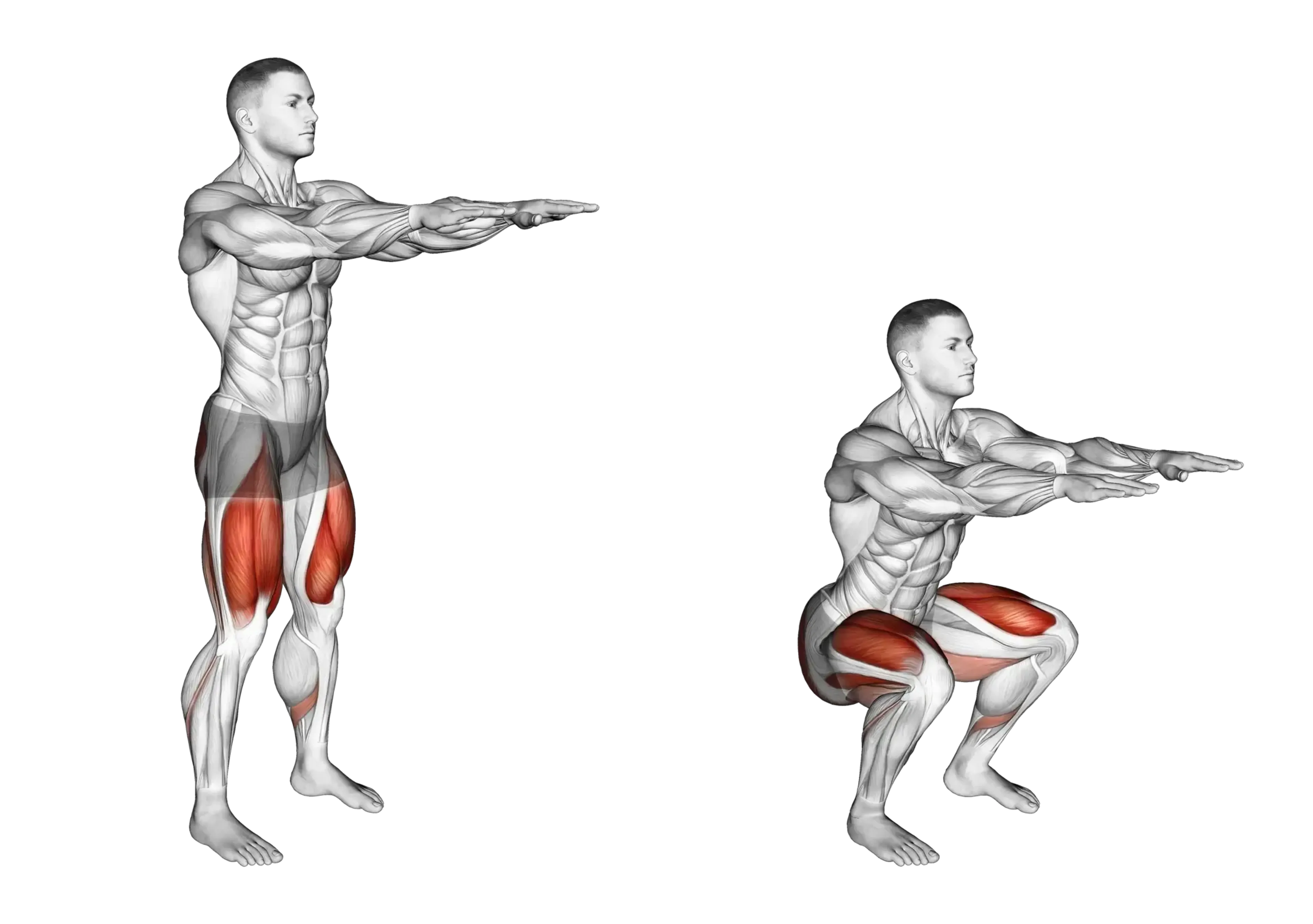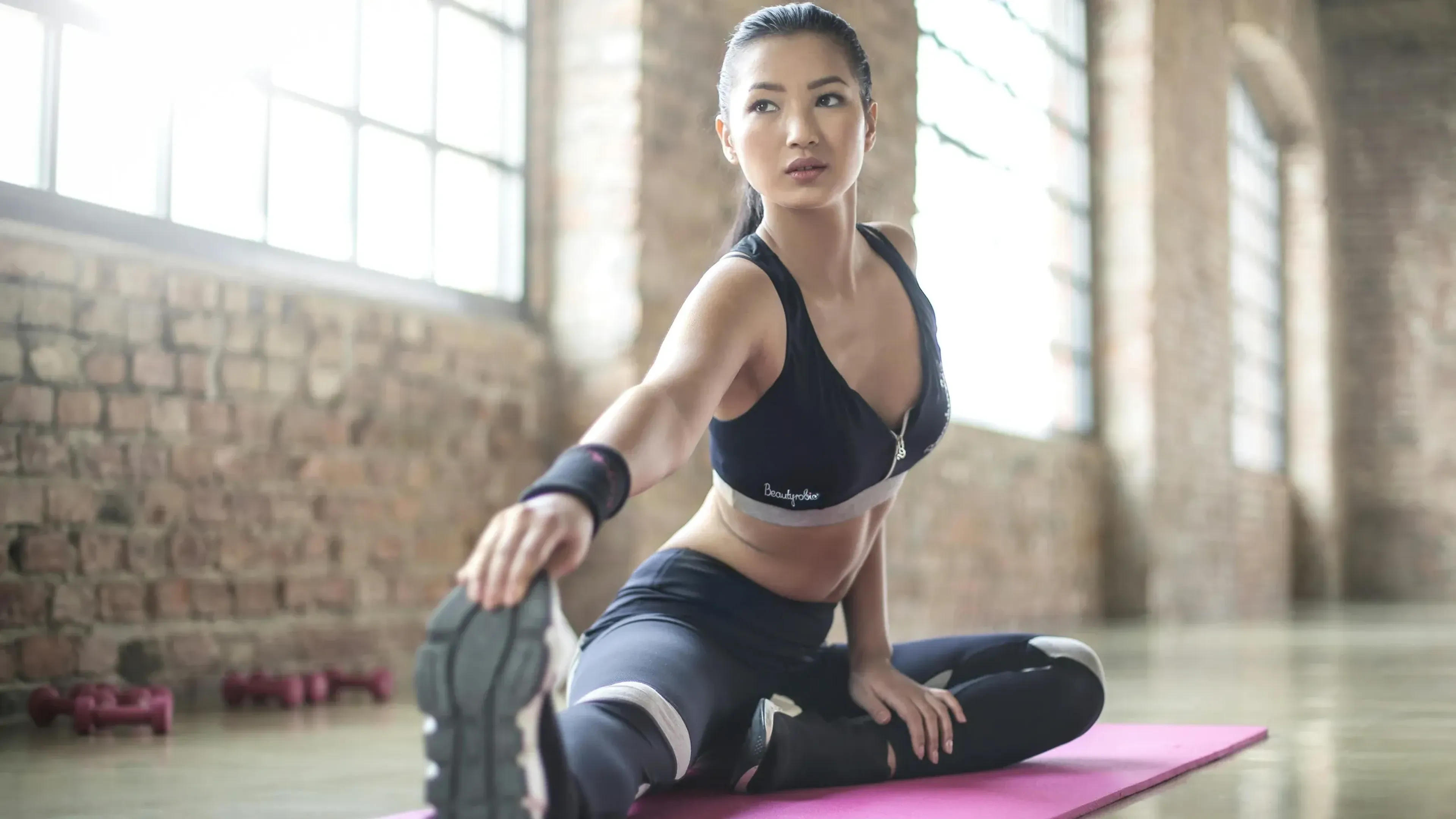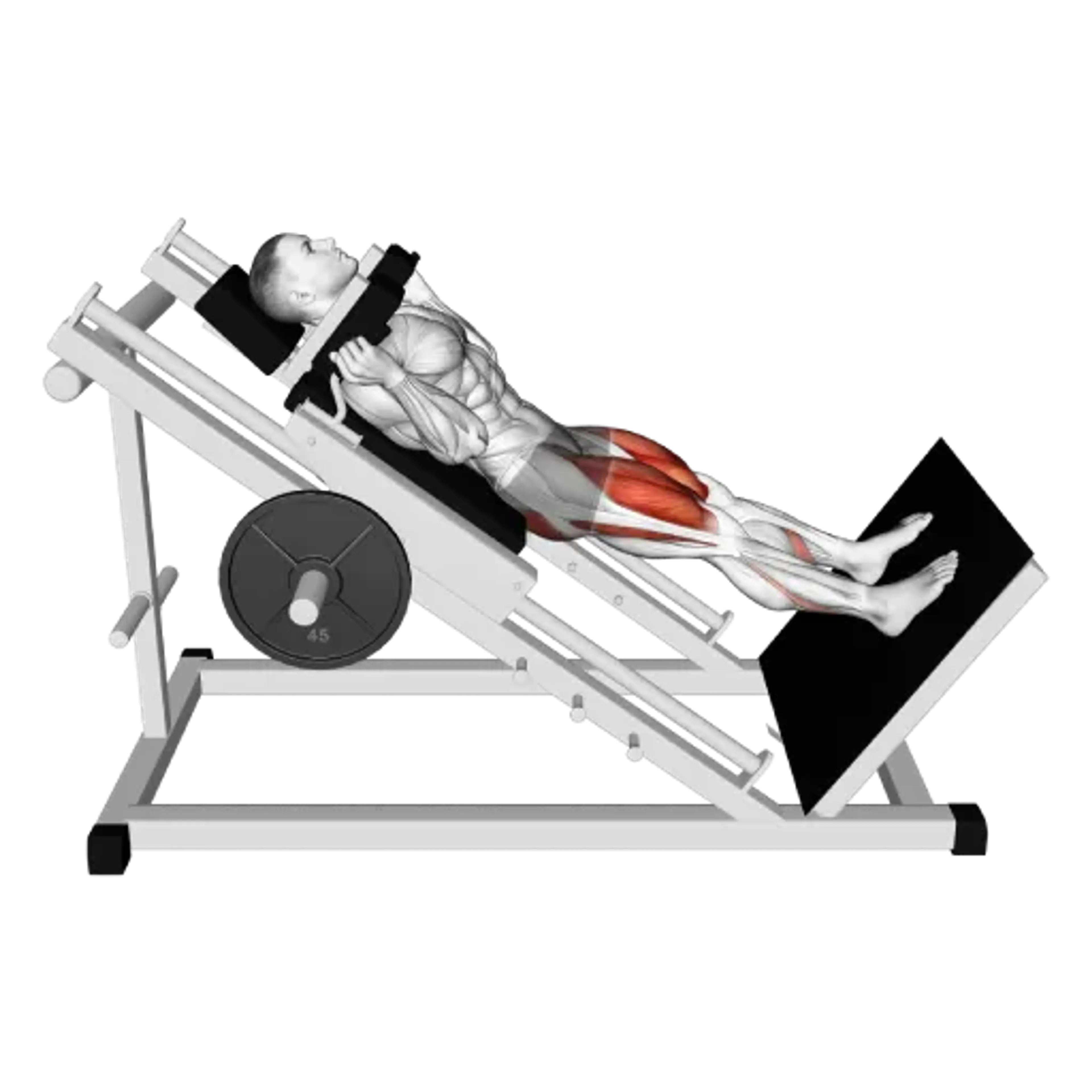Bodyweight Squat

Overview
- Primary Focus:
- Upper legs.
- Equipment:
- Body weight.
- Difficulty:
- Beginner.
General Information
The bodyweight squat is a compound exercise that primarily targets the upper legs, specifically the quadriceps and hamstrings, and secondarily the glutes. It is a beginner-level exercise that can be performed without equipment, making it a great starting point for anyone new to fitness or looking for a functional lower-body movement.
This exercise mimics the natural motion of sitting and standing, which makes it extremely practical for building strength and improving mobility in everyday life. It's commonly used in warm-ups, general conditioning routines, and high-rep circuits. Because it doesn't place heavy load on the joints, it's suitable for most people when done with proper form.
Bodyweight Squats can be scaled up in intensity by increasing reps, slowing down the tempo, or holding a pause at the bottom. Once proper form is mastered, it also sets a strong foundation for more advanced squat variations involving weights or additional equipment.
Muscles Worked
- Rectus Femoris
- Primary
- Gluteus Maximus
- High
- Vastus Lateralis
- High
- Vastus Medialis
- Medium
- Adductor Magnus
- Low
- Biceps Femoris
- Low
- Gluteus Medius
- Low
- Gastrocnemius (Lateral Head)
- Minimal
- Gastrocnemius (Medial Head)
- Minimal
- Soleus
- Minimal
Instructions
- Stand with your feet about shoulder-width apart and your toes slightly pointed outward.
- Engage your core and keep your chest upright while looking forward.
- Begin the movement by bending at the hips and knees, lowering your body as if sitting into a chair.
- Keep your knees tracking over your toes and your heels flat on the ground.
- Lower until your thighs are at least parallel to the floor, or as low as your mobility allows.
- Push through your heels to return to the starting position, squeezing your glutes at the top.
- Repeat for the desired number of reps.
Common Mistakes
Injuries
Bodyweight Squat is a low risk exercise when performed with correct form. Since it doesn’t involve external weight, the risk of injury is minimal, but poor technique or mobility issues can still cause problems.
Common issues include knee strain, particularly if the knees cave inward during the descent. Lower back discomfort may also occur if the torso leans too far forward. These risks are often tied to poor posture or lack of ankle and hip mobility.
To prevent injury, focus on form before speed or volume. Warm up properly, work on mobility if needed, and ensure your knees stay aligned with your toes throughout the movement.
Alternative Exercises

Frequently Asked Questions
- Q: How many bodyweight squats should I do as a beginner?
Start with 2-3 sets of 10-15 reps, focusing on perfect form.
- Q: Can I do bodyweight squats every day?
Yes, as long as recovery and proper technique are prioritized.
Overview
- Primary Focus:
- Upper legs.
- Equipment:
- Body weight.
- Difficulty:
- Beginner.




